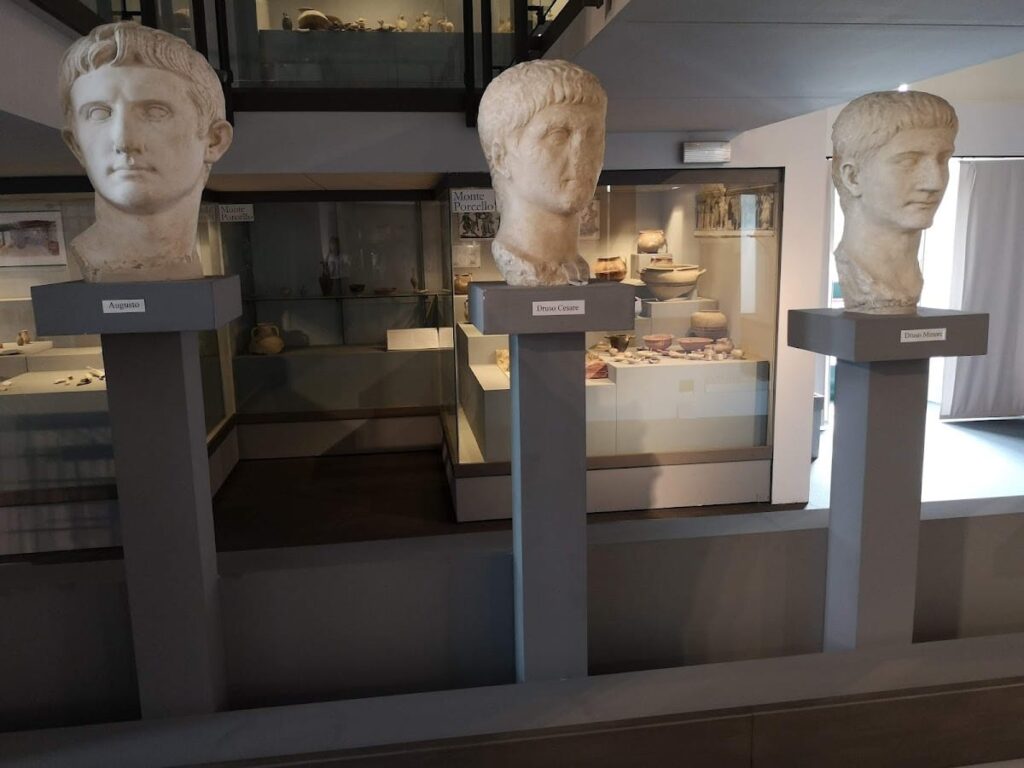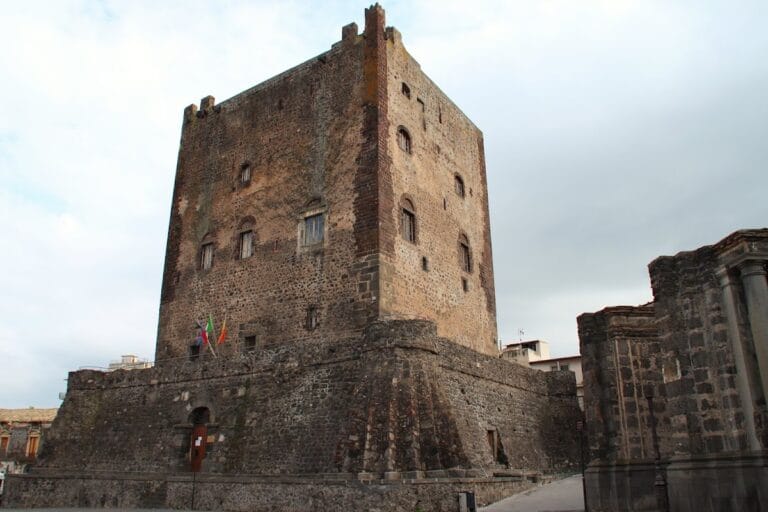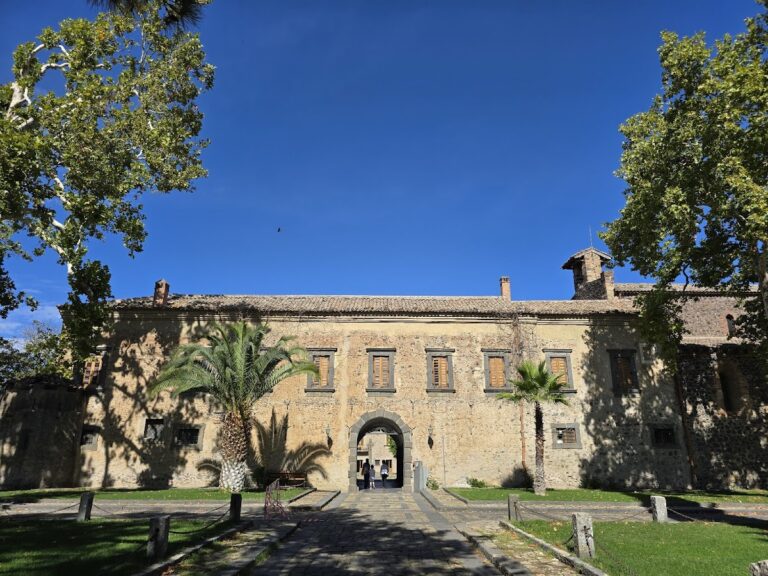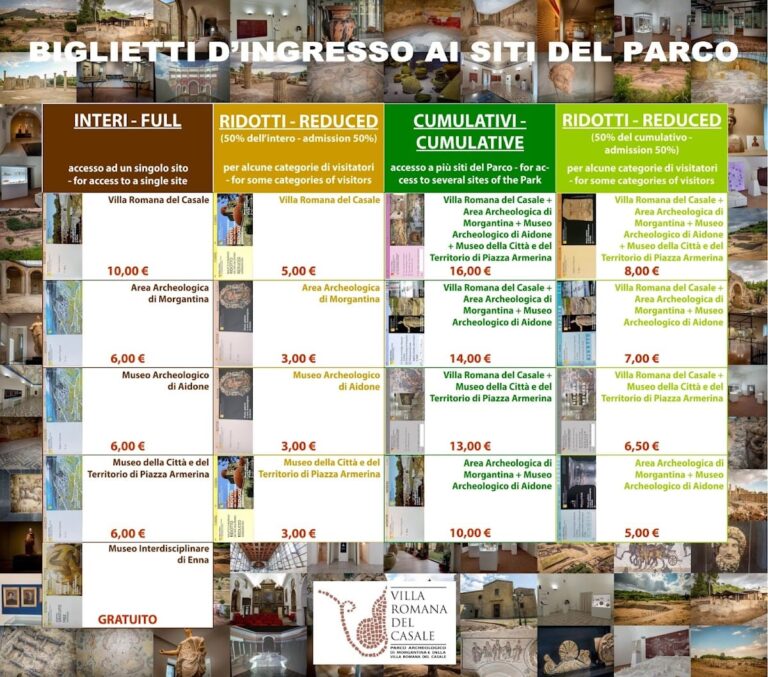Archaeological Museum of Centuripe: Showcasing Sicily’s Ancient Heritage
Visitor Information
Google Rating: 4.6
Popularity: Low
Google Maps: View on Google Maps
Official Website: cultura.gov.it
Country: Italy
Civilization: Greek, Roman
Remains: Museum
History
The Archaeological Museum of Centuripe is located in the town of Centuripe, within the province of Enna in inland Sicily, Italy. The area was originally inhabited by the Siculi people from around 5000 BCE. Over time, the Siculi underwent a process of Hellenization, adopting Greek cultural elements before the city reached its peak during Roman rule.
Centuripe allied with Rome in 263 BCE during the First Punic War. This alliance granted the city tax exemptions and a degree of self-governance, allowing it to flourish under Roman administration. The city expanded significantly under the emperors Augustus and Hadrian, who oversaw the construction of monumental tombs, a forum, and the Augustales building, a religious site dedicated to the imperial cult. At its height, Centuripe’s population reached approximately 12,000, more than double its current size.
The museum’s origins date back to early 20th-century archaeological excavations and the 1920s, when the local municipality began collecting artifacts. Initial research was conducted by the University of Catania, and these finds were first displayed in a “Civic Museum” housed in the old town hall. In 1956, plans were approved to build a new museum with panoramic views of Mount Etna and the Simeto valley. Construction was slow and interrupted for decades until the 1980s, when architect Franco Minissi resumed work. The museum officially opened in December 2000.
About ten years after opening, the museum closed for safety reasons but reopened in 2024 with a modernized and expanded exhibition. The current collection combines artifacts from the original civic museum with finds from excavations conducted since 1968 by the regional Superintendency for Cultural Heritage. Despite this, many important objects, including most of Centuripe’s coroplastic (terracotta) works, remain housed at the Paolo Orsi Regional Archaeological Museum in Syracuse.
Among the museum’s notable historical artifacts is an inscription found in a private house that records a diplomatic mission of three Centuripe ambassadors to Rome and Lanuvium. This inscription may represent one of the oldest examples of an active twinning relationship between cities, a connection still celebrated annually.
Remains
The Archaeological Museum of Centuripe is arranged over multiple floors, each dedicated to different themes and types of artifacts. The building itself overlooks Mount Etna and the Simeto valley, linking the collection to its surrounding landscape.
The first floor focuses on residential sites, economic activities, and important Roman sculptures. It displays a refined Hellenistic statue of the Muse dating from the 2nd century BCE to the 1st century CE, and a colossal marble head of Emperor Hadrian from the 2nd century CE, found in the Difesa district. Sculptures from the Augustales building include portraits of imperial family members, such as Germanicus and Drusus Minor. A notable marble torso clad in lorica (Roman military armor), likely representing Augustus from the Augusteum complex, is also exhibited alongside a headless female statue with intricately draped clothing.
The museum features several columbaria, which are structures containing niches for urns holding cremated remains. These are rare in Sicily but were found in large numbers at Centuripe. The columbaria bear inscriptions with the names of the deceased and were typically part of family tombs.
On the mezzanine level, visitors find material from the old municipal collection, including artifacts without excavation records. This section also presents a selection of forgeries and items recovered after illegal excavation.
The second floor is dedicated to necropolis finds, funerary equipment, and displays illustrating contemporary funerary rites and customs. Among these are local pottery types such as lekanis (shallow bowls) and kraters (large mixing vessels), decorated with reliefs and tempera paintings from the 3rd to 2nd centuries BCE. The museum also preserves theatrical masks and terracotta statuettes of exceptional craftsmanship, which earned Centuripe the nickname “Tanagra of Sicily” due to their similarity to the famous Greek figurines from Tanagra.
The third floor is reserved for temporary exhibitions, allowing the museum to showcase rotating displays and special collections.
Overall, the museum’s collection highlights the artistic and cultural achievements of Centuripe, reflecting its long history from Siculi origins through Hellenistic influence to Roman prominence.










